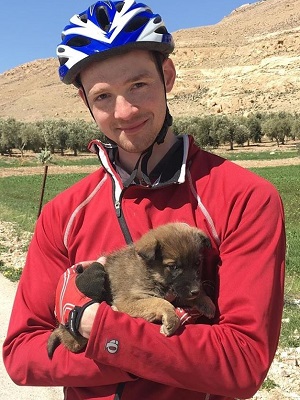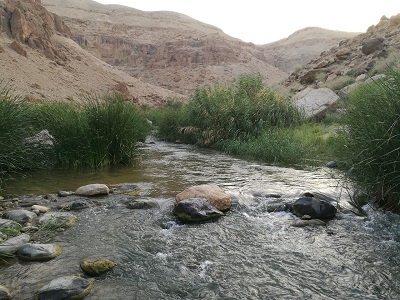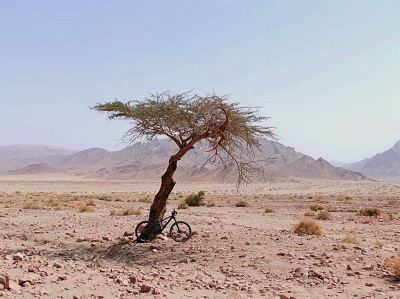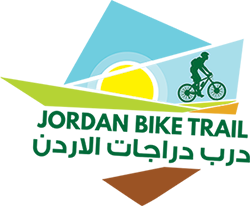

Animals
- DOGS: The animals that you’re most likely to encounter along the way are goats, sheep, and their shepherd dogs, as well as some stray dogs. The dogs are loud and intimidating, but mostly not a major threat. Once you’re well past the sheep, goats, or the property the dogs are protecting, they should leave you alone.
If the dog does NOT leave you alone, we recommend the following steps:
- Get off the bike, walk slowly and, if necessary, keep your bike between yourself and the dogs. Resist the urge to drive away quickly – this might encourage the dog to run after you.
- Try to wave at the shepherd if he/she is around. They’ll often call the dogs off.
- Sometimes, with particularly aggressive dogs, you may need to reach down to pick up a rock and lift your arm (not even throw it) — this warning will cause most dogs to jump a few meters back.
- If that doesn’t help, you can throw the rock right next to the dog. There is no need to actually hit the dog! (Dogs in Jordan are used to be thrown stones at, and will take the warning seriously.)
- There are some venomous SNAKES, SCORPIONS and SPIDERS in Jordan. You’re unlikely to really encounter snakes, but you may see one sunning itself on a road. Scorpions and spiders often hide under rocks or in other dark places, so be careful when lifting or moving rocks. If you’re camping, be sure to shake out your shoes or any other gear you’ve left out overnight.
Cars
-
- The vast majority of the route — even sections on paved roads — stays away from car traffic. Occasionally, the Jordan Bike Trail passes through busy intersections.
- Drivers in Jordan can be very aggressive —be careful and wear visible clothing. If you’re riding at dusk or dawn, be sure to have bike lights.
Cell Service
-
- Cell service is generally good along the Jordan Bike Trail
- In the bottoms of deep wadis (Zarqa, Zarqa Ma’in, Hidan, Mujib) you won’t have service; and, for the most part, you won’t have service between Rum Village and the final descent to Aqaba.
- If you’re traveling alone, we’d recommend carrying a Garmin InReach or SPOT Tracker to communicate in case of emergency when you don’t have cell service.
Emergency Contacts
In case of emergency, dial 911.
Food & Water
-
- The Jordan Bike Trail regularly passes basic shops, so you shouldn’t have to carry lots of food. The longest distance between resupply points is 70km (between Rum Village and Aqaba). But still take planning ahead seriously – there are a number of ~40km sections with major climbs as well, and especially on hot days you should make sure to take enough water.
- Natural water sources are infrequent, but present in Jordan. You can buy water at all shops. We’ve noted in waypoints and in stage notes where the route passes natural springs. The trail also crosses a number of wadis/canyons (Wadi Zarqa, Wadi Hidan, and Wadi Mujib), but we recommend using springs before running water in wadis. You should always treat water from natural sources before drinking — best to use chemical treatment or steripen.
- Tap water in Jordan is not guaranteed to be potable — to be safe you may want to purify it before drinking. Mosques often have potable water freely available (usually from a metal tank with spigots; ask before drinking).
- While distances between water sources are not great, we’d recommend having the capacity to carry 4-5L of water at a time. Some of the 40km stretches between water include long, hot, exposed climbs, where sun exposure and heat exhaustion are a risk.
- If you plan on camping, be prepared to carry even more water to campsites without water sources nearby.

Interaction with Locals
-
- Interactions with local people can be the perfect way to learn more about Jordanian culture, and make memorable experiences. Hospitality is a very important tradition in the country – we even think Jordanians may be the nicest people in the world! It might often happen that you are invited for a cup of tea or coffee. If you don’t feel like it, it is also perfectly acceptable to decline an proposition. Place your right hand over your heart and politely make your excuses.
- Especially in rural areas families live in a traditional way. When greeting locals, it is recommended to wait for them to make the first step and determine the form of greeting. Out of religious or cultural reasons, women for example might not want to shake hand with men.
- Since many communities along the route are still not used to foreign tourists. We suggest that women dress conservatively (long sleeve shirts and pants, if possible loose clothes), and we highly recommend that women travel in groups of two or more.
KIDS THROWING ROCKS
Most people in Jordan are incredible hospitable. However, cycling is a relatively new sport in Jordan, and especially kids in the rural communities are not used to cyclists, or foreigners in general, and did not learn how to deal with them appropriately. In the past, there were therefore incidents when kids, usually not fully being aware of the possible consequences of their actions, were throwing stones at cyclists passing by. If that happens, we recommend you to immediately stop, and shout at the kids, making very clear that what they are doing is totally unacceptable. You can shout something like “What are you doing?!”, or “Haram!” (meaning approximately shame). Then slowly walk, or cycle away. Please report any such incidents to our team (info@jordanbiketrail.com), so we can monitor them, and report them to the police. This is very important in order to deal with the problem, potentially take appropriate legal action, educate people to behave differently, and thus ultimately ensure the safety of all cyclists. If you are able to take any photographs of the incident that would generally be very helpful.
Military
In a couple of places, the Jordan Bike Trail passes through military checkpoints or near military bases. You may be required to show your passport/Jordanian Visa when crossing a checkpoint, but you should face no other issues.
Personal Safety
Jordan is generally a very safe country, and – as mentioned before – most people here are incredibly caring and hospitable. However, as in any country in the world, it is not a stupid thing take some precautions when travelling on a bike route that takes you at times through very remote and lonely areas. Cyclists who already did the bike trail for example made sure to regularly update someone about their whereabouts, or carried some pepper spray with them (especially female-only groups said they felt safer that way). Chances are basically non-existent that you will ever need to use it, but better safe than sorry, right?!


Weather
-
- Jordan’s climate is hot and dry, with a cooler “wet” winter (more precipitation in the North) and a hot dry summer.
- Sun exposure is one of the biggest potential safety risks you’ll encounter on the Jordan Bike Trail. Be sure to wear sunscreen and sunglasses, and consider wearing lightweight, long-sleeve clothing. Carry sufficient water — it’s not uncommon on hot days to consume 1L of water per hour when riding. Where there are long stretches with little shade, we’ve noted key shade spots in our waypoints.
- Flash floods can be a danger especially in winter and spring, but the Jordan Bike Trail doesn’t pass through any slot canyons; and many of the major canyons’ streams are regulated by dams upstream of the route. It is possible though that a road may be washed out in canyons in winter rain.
- Temperatures vary widely between day/night, and depending on elevation. In the higher desert elevations, temperatures can be quite cold at night, with lows below freezing from Dec-Jan.
